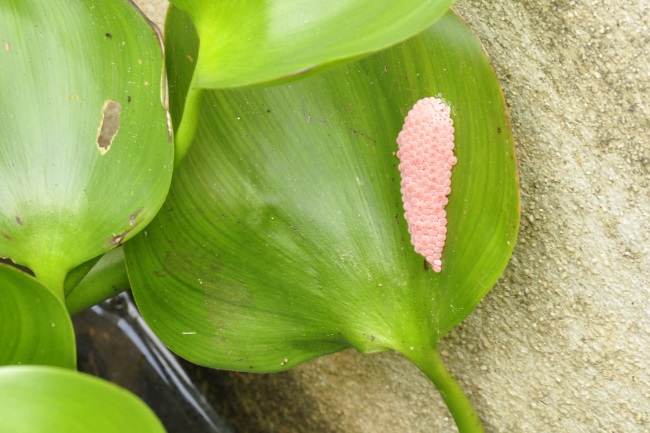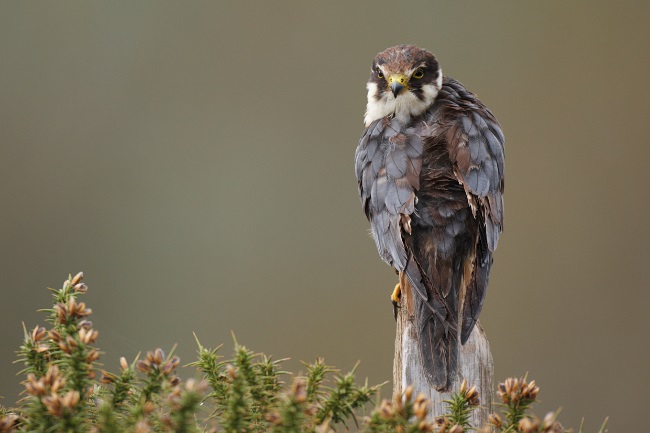There are over 3,000 species of dragonflies globally, most of which live a very similar lifecycle. However, one key difference is how long they live. Some will live for only a year, whereas other may live for up to five years.
Contents
The lifecycle of a dragonfly

When we think of dragonflies, we tend to think of those bejewelled masters of the sky, zipping above our ponds as they gather up tasty flies. However, the majority of a dragonfly’s life is spent as a larva, also called a nymph, living below the water’s surface.
A dragonfly starts its life as an egg, which the female lays after the male has mated with her. Eggs are laid in different locations depending on the species of dragonfly. While we tend to think of dragonflies as living around still water, such as lakes and ponds, there are some that prefer flowing water.
| Life Stage | Description |
|---|---|
| Egg | The lifecycle of a dragonfly begins with an egg laid in or near water. The eggs are usually attached to plants or other substrates. |
| Nymph | After hatching, the dragonfly enters the nymph or larval stage. Nymphs are aquatic and live in the water, where they undergo several molts as they grow and develop. |
| Adult | Once the nymph matures, it emerges from the water and transforms into an adult dragonfly. The adult stage is the final stage of the dragonfly’s life cycle, where it reproduces and completes its lifespan. |
The female has an appendage known as an ovipositor, which allows her to insert the eggs where she would like to put them. The southern hawker dragonfly, for example, tends to cut slits into vegetation or even wood and lay her eggs into this.
Other species, however, such as clubtail dragonflies, lay their eggs directly into the water. These different techniques all have distinct advantages and disadvantages. Laying eggs outside of the water can keep them away from aquatic predators but risk them drying out, whereas eggs laid in the water won’t dry out but might become fish food.
Eggs come in two types, depending on which species they are from. Exophytic eggs are jelly-like and are deposited straight into the water. Endophytic eggs are more of an elongated shape and have a tougher form. These are laid into slits in plant materials.
The eggs will either be safely tucked away until they hatch, or they will stick to underwater vegetation or float to the bottom and become buried in the mud and silt.
The majority of dragonflies lay their eggs straight into the water or in vegetation below the waterline or just above it. A few lay their eggs completely out of the water, giving extra protection from predation by fish.
The eggs take around 2-5 weeks to hatch unless they remain dormant throughout the winter, in which case they will hatch several months later in the spring. All larvae enter the water shortly after hatching, even if they were laid outside of it.

The larvae will hatch first into a prolarva before having their first moult shortly after. A moult is where the larva shrugs off its exoskeleton, its outer layer of skin and hardens a new layer below. This is essential to allow it to grow and change. Most larvae go through this process between 5-14 times during their juvenile lifecycle.
Unlike the stunning adults, dragonfly larvae are generally brown or green to help camouflage them. Though they are excellent predators themselves, there are plenty things in the murky water that would be more than happy to chomp down on them too.
Some live in the mud and silt, keeping them extra safe from predators, while others are covered in hairs that capture sediments and vegetation, building them the perfect disguise. Vegetation also makes an important hiding place, both from predators and prey.
How long they will stay within the water depends on what species they are, with some short-lived varieties spending less than a year within the water, emerging within 2-3 months, whereas some stay below the surface for years.
When the time comes, and they are big and strong enough, they will head for the surface. Most species choose to climb up emergent vegetation, literally climbing their way up from below the water into the air. Other species might emerge onto the muddy banks, or tree trunks.
Once emerged, they will moult. This first moult out of the water is a very dangerous time. The larvae will cling on to the vegetation and then burst out of the back of their own skin, pulling themselves out, and then holding on to their old skin while their new one hardens.
It takes time to pump out their wings, however until they harden, they do not work. The dragonfly is trapped, waiting for its new body to be ready to move. At this time predators that spot it can have an easy meal.
| Dragonfly Species | Lifespan |
|---|---|
| Common Green Darner | Up to 3 to 4 months |
| Emperor Dragonfly | Up to 4 to 6 weeks |
| Blue Dasher | Up to 2 to 3 months |
| Widow Skimmer | Up to 4 to 6 weeks |
| Scarlet Skimmer | Up to 3 to 4 months |
| Meadowhawk Dragonfly | Up to 2 to 3 months |
Once its wings are hardened, the dragonfly can start its life as an adult. Its first priority is to feed, and it will head out to find a suitable source of small flying insects. This won’t necessarily be over water. Dragonflies will hunt over hedges, along roads and even on open moorland.
Having fed themselves up most will return to water to find a mate. They tend to be more obvious once they are at the water’s edge as the males are holding territory and trying to catch the attention of the female.
Males can be particularly aggressive towards other dragonflies, frightening them off in order to keep their prized patch free. Even other species of insect can get told to leave the vicinity so the male dragonfly can strut his stuff. Females in many species look identical to the males, though some may have slightly different colouring.
Their time as adults may seem brief to us but to a dragonfly, the only reason to leave the relative safety of the water is to mate and reproduce. Most will die within weeks of emerging, and none will survive the winter. Yet despite this short lifespan, they may travel long distances in pursuit of food and the perfect mating spot.
Ways to kill a dragonfly
Dragonflies may look like emperors of the skies when they are zipping over our heads, but like many insects, they have a large array of predators that can quickly shorten their lifecycle from a few months to a few minutes. So what are common ways for dragonflies to pass out of this realm?
Predated as an egg or larva

Life below the waves really isn’t as calm and peaceful as we often like to imagine it is. It’s a world of eat or be eaten. While the dragonfly larva is a voracious predator, they are also a favourite food for many aquatic animals, from fish to other invertebrates. Dragonfly larva will even happily eat each other, with no strong feelings on cannibalism. Their most vulnerable times are as an egg or when they are moulting.
Failed emergence
Emerging from the water and moulting from its juvenile form to an adult is a dangerous time for a dragonfly. Not only is the process long and leaves the dragonfly vulnerable, their bodies can be easily damaged before they harden. Ideally, a dragonfly will emerge in vegetation to stay hidden from predators. Still, if that vegetation were to touch a wing before it was fully hardened, it could cause it to become misshapen, and the dragonfly will not be able to take to the air.
Predation as an adult
The maiden flight of the dragonfly is often the most treacherous. They are getting used to their new body and not yet flying particularly well. Many birds have learnt to perch nearby and swoop down to grab these inexperienced flies. Once the dragonflies have found their legs, however, few birds can catch them on the wing. Yet some birds, like hobbies, are specially adapted to catch dragonflies on the wing, using their superior speed and agility to catch the unfortunate insects.

Live fast, die young
A dragonfly’s life may seem short and fast to humans, but like many insect species, these species have worked out the perfect amount of time for what they need to do. Life for a dragonfly revolves around giving its larvae enough time to get big and strong and then emerging to mate. The longer they spend reaching maturity, the more likely they will die without having fulfilled this purpose.
For us, as observers, we may only be able to peek inside a small portion of the dragonfly’s lives; however, how fortunate we are that it is such a beautiful and dramatic part.

